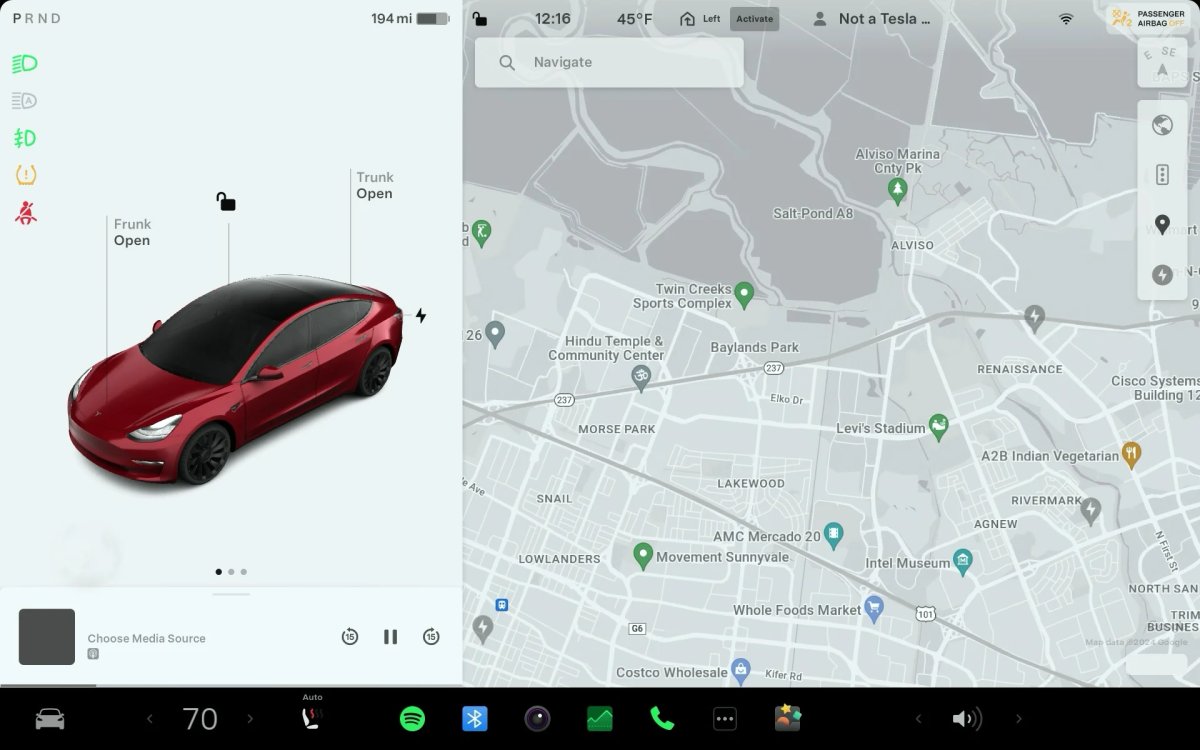By Karan Singh

Tesla is updating the Model 3 and Model Y Rear-Wheel Drive variants with new battery packs. This new pack will replace the current BYD Blade pack in these vehicles. Its interesting to see Tesla making battery pack changes to vehicles, especially in light of recent news on Tesla working with its cell manufacturing partners and internally to make better batteries.
Let’s take a look at this potential upgrade that was spotted by @eivissacopter over on X.
The CATL 6M Pack
The new pack, which is likely replacing the current BYD 7C pack in the Model 3 and Model Y RWD variants, is going to be called the CATL 6M. The last time we had a CATL LFP pack in the RWD variants was back in 2021.
This pack will be bringing a 6% increase in overall capacity, from 60.1 kWh to 62.5 kWh. At about a 4% increase in energy, it’s not a huge jump, but the pack is also expected to bring improved charging performance due to a higher nominal capacity and voltage. Another benefit will be its reduced mass, with the new battery pack being about 44 pounds (20 kg) lighter. These items all contribute to range and charging performance, so we could potentially see a range increase in these RWD models.
However, Tesla previously software locked the extra 2.5 kWh to match the BYD packs that were being shipped at the same time as the CATL packs – which mostly just resulted in slightly improved charging performance and better battery longevity.
Pack Chemistry
This pack is an LFP – or Lithium Iron Phosphate. LFP packs have more stable chemistry, resulting in less degradation, but less energy density for weight. They also perform poorly in contrast to their NMC siblings in extreme cold or extreme heat. However, they can be charged to 100% all the time, and Tesla actually recommends this. We wrote about Tesla’s battery tech in detail, for those looking for more information.
There is a possibility that manganese will be introduced into this new pack. Manganese improves energy density, and also helps with low-temperature performance, which would help to mitigate some of the concerns with today’s current LFP packs in places that see cold weather on the regular, like Canada or the Nordic nations.
Release Date? North America?
This battery back likely won’t come to North America now, due to tariffs against Chinese batteries and cells. Customers in Europe, Asia, and other markets can expect to see these batteries in their vehicles sometime next year while Tesla works on other solutions to provide the North American market with a cost-competitive LFP pack that’s sourced from materials within the continent.
By Karan Singh

With the latest FSD update, Tesla has updated its new Speed Profiles feature, which was introduced with FSD v12.5.5. The new FSD speed profiles are Chill, Standard, and Hurry, but they were limited to highway use.
This is how each profile affects the way FSD drives:
• Chill focuses on slower lanes and minimal lane changes, which is ideal for those preferring a steady pace with minimal lane changes.
• Standard replaces Average, offering a balanced approach that adjusts to traffic speed but remains neutral in lane positioning.
• Hurry, formerly Assertive, is designed for faster driving and frequent lane changes. It aims to reduce travel time by prioritizing overtaking and occupying the left lane on highways.
Changes to Speed Profiles
Initially, these speed profiles were limited to highways only. However, with the release of FSD 12.5.6.2, Tesla’s AI lead, Ashok Elluswamy, confirmed that these new profiles are now available on any road that has a speed limit of 50 mph (80 km/h) or higher.
For now, roads with speed limits lower than this still have no speed profiles associated with them. However, this will likely change as Tesla continues to work on and improve the Speed Profiles for lower speed limits.
FSD 12.5.6.2 brings FSD profiles to city streets! Woohoo! The profiles are so good, and so far Hurry doesn’t seem to have speed degradation… But need more driving to confirm. https://t.co/c0cOfnlp4E pic.twitter.com/P1fOLGAJ5k
— Dirty Tesla (@DirtyTesLa) November 6, 2024
Release Date
This update will likely be available to more AI4-equipped vehicles in the coming weeks, assuming all testing with the early-access owners goes well. Tesla rolls out FSD updates in phases to help ensure the safety of its users. You can expect it to land in your vehicle within the next two to three weeks. The next major update to FSD after FSD 12.5.6 is expected to be FSD v13, which Tesla said they expect to have ready for some AI4 vehicles around Thanksgiving. Given the slow release of FSD 12.5.6, we wouldn’t be surprised if the FSD v13 timeline slipped a few weeks.
Last updated: Nov 8, 6:00 am UTC
Hardware 3 owners are not expected to receive this update anytime soon—V12.5.4.2 just began being widely available for HW3 and AI4 vehicles.
By Karan Singh

As part of its usual cycle of updating maps, Tesla is rolling out a new map update for its vehicles this week. The previous map update version for North America was NA-2024.8-14924.
Tesla formats its map version as region-year.week. For example, NA-2024.8 represents the North American map update created in the 8th week of 2024.
Map updates are fairly large, and you’ll need to be connected to Wi-Fi to receive them—they’ll be about seven to eight gigabytes, depending on your region.
North American Maps
Vehicles in North America are now receiving NA-2024.20-15136.
This update is about 6.9GB and is slightly larger than the previous update. Tesla software hacker @greentheonly on X noted that while there’s more data, no feature flags have changed. This means that Tesla’s upcoming lane-based navigation changes likely aren’t integrated in this update.
European Maps
The map update isn’t limited to just North America. The EU has also received an update to its map data, with version EU-2024.32-15126.
This update is about 8GB, owing to the nature of the larger number of countries that the European maps have to cover. Thanks to @CarlosCuezva on X for spotting this update. Once again, no feature flag changes over the previous update.
What Does It Do?
While this map update doesn’t appear to enable any new features in and of itself, it helps your vehicle navigate more efficiently by being aware of newer routes. FSD also relies on some map data, so updated maps could also help FSD use drive safer. Overall, while it may seem an inconsequential update, every map update provides a new baseline that helps to improve both the trip planner and FSD.
When Does it Release?
Tesla began rolling this update out last week and is now rolling it out to a wider user base. Like Tesla’s software updates, there’s no way to force a map update. When eligible and connected to WiFi, the vehicle will automatically check for a map update, and unlike software updates, vehicles will download and install map updates silently in the background.
To check your version of Tesla maps, go to Controls > Software and look for the version listed under Navigation Data. If a map update is available, you’ll see which version is available and a progress bar that indicates the progress of the download.




